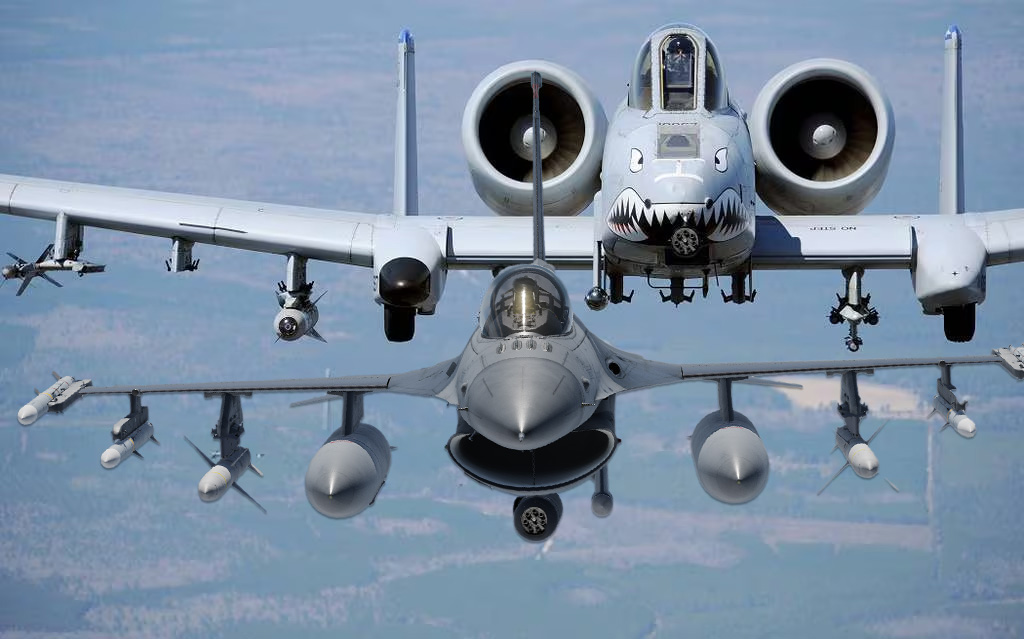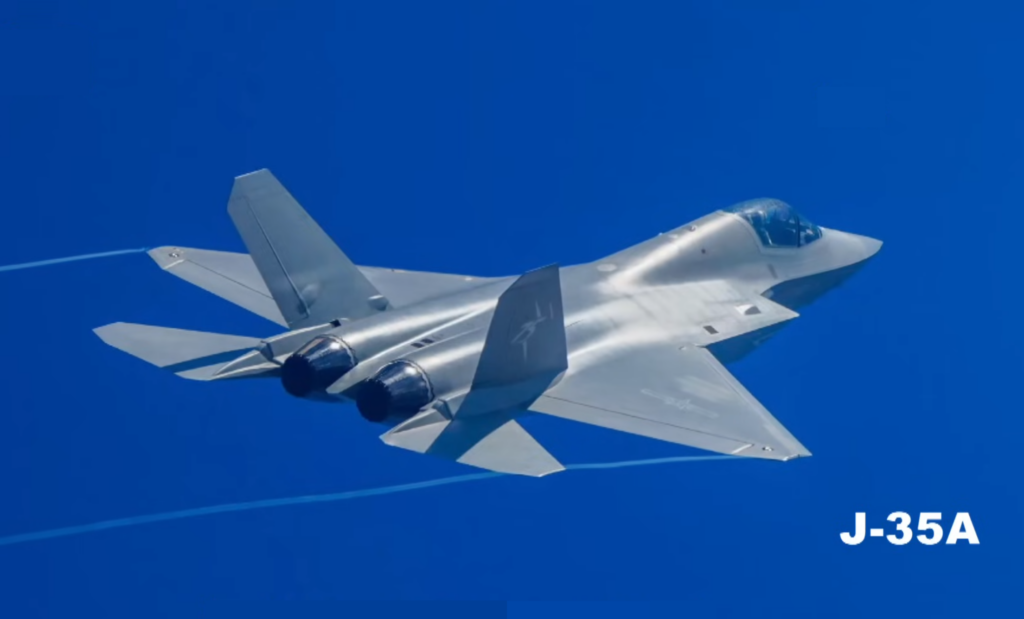Why are Russian fighter jets in Libya and why is that a big deal?
- By Alex Hollings
Share This Article

Over the weekend, it was revealed that the Russian military had deployed fighter jets to Al Jufra Airfield in Libya. The nation is currently embroiled in a civil war that sees U.N. backed forces squaring off with Russian mercenaries in a Cold War-esque competition.
Images soon hit social media of the fourth-generation (non-stealth) fighters arriving in Libya, along with reports from the United State’s AFRICOM (Africa Command) stating that the Russian jets stopped off in Syria first for a new paint job meant to hide their Russian government backing. AFRICOM is currently tracking as many as 14 Russian military aircraft in Libya, all of which have had their national markings painted over.

The jets sent to Libya appear to be Mig-29s and Su-24s. The Mikoyan MiG-29 was developed by the Soviet Union as an air superiority fighter meant to square off against America’s workhorse fighters, the F-15 Eagle and F-16 Fighting Falcon. The Sukhoi Su-24 is a variable swept-wing ground attack aircraft that was first put into service in the 1970s. Both of these jets are in service to nations other than Russia, which may have prompted the efforts to hide their Russian colors prior to their deployment to Libya.

These jets are undoubtedly there to provide close air support to mercenaries fighting under the flag of Russia’s Wagner Group–a private military company run by a former Russian intelligence officer. Russia has increasingly relied on mercenary forces in combat operations in places like Libya, Mozambique, and Syria. By using third party contractors, Russia is able to insulate itself from international fallout regarding its combat operations on foreign soil.
MORE: Over multiple days in May, Russian MiG 29s and SU-24 fighters departed Russia. At that time, all the aircraft have Russian Federation Air Force markings. After they land at Khmeimin Air Base in Syria, the MiG 29s are repainted and emerge with no national markings. (1/2) pic.twitter.com/ghgpKe9rDo
— U.S. Africa Command (AFRICOM) (@USAfricaCommand) May 27, 2020
When Russian mercenaries from the same Wagner Group engaged a group of around 40 American Special Forces troops alongside Syrian Democratic Forces in Syria in 2018, the Russians suffered brutal losses, with the mercenaries eventually having to retreat under American air strikes only to return to collect their dead later. No Americans were injured in the battle, but estimates of Russian mercenaries killed reach as high as 400. After the incident, the Russian government claimed no knowledge or affiliation with the Russian forces that took part in the attack, claiming they were all there independently in support of Bashar al Assad’s Syrian regime.
The same group has been fighting in Libya in order to back claims of rule made by General Khalifa Haftar, under a veil of Russian claims of ignorance once again — but the addition of air superiority and attack aircraft sourced directly through the Russian military now makes it all but impossible for Russian President Vladimir Putin to deny Russia’s active involvement in the Libyan conflict.
“Russia is clearly trying to tip the scales in its favor in Libya. Just like I saw them doing in Syria, they are expanding their military footprint in Africa using government-supported mercenary groups like Wagner,” AFRICOM commander Army Gen. Stephen Townsend said in a news release Tuesday.
“For too long, Russia has denied the full extent of its involvement in the ongoing Libyan conflict. Well, there is no denying it now. We watched as Russia flew fourth generation jet fighters to Libya — every step of the way. Neither the LNA nor private military companies can arm, operate and sustain these fighters without state support ― support they are getting from Russia.”
Russia has not even confirmed the presence of mercenaries from the Wagner Group in Libya, but earlier this month, a report prepared by the United Nations outlining how there are already hundreds of Russian mercenaries operating in the embattled nation was leaked to the press.
Why is Russia interested in Libya?
Russia first deployed mercenaries to Libya in September of 2019. Russia’s “mercs” were sent in to support of the aforementioned General Haftar on the front lines of Tripoli, in direct opposition of the formal government recognized by the United Nations, the Government of National Accord, led by Prime Minister Fayez al-Sarraj.
Beyond the hundreds of mercenaries Russia has provided Haftar, reports also indicate that the Russian government has funneled some $3 billion into Haftar’s opposition government. It was later revealed that the huge sum of money was actually counterfeit, and is now in wide circulation in Eastern Libya, making currency another front in the fight between the two governmental systems. Many parallels have been drawn between Russia’s support for the Libyan warlord and Russia’s military backing of Bashar al Assad in Syria. Assad stands accused of using chemical weapons against his own people on multiple occasions, which has prompted the United States to directly engage elements of the Syrian military with retaliatory missile strikes.
Like Syria, Russia’s involvement in Libya isn’t based on an idealogical common ground with Haftar’s government, but rather based on the strategic value of a Russian-friendly government in Northern Africa, directly south of Europe.
”If Russia seizes basing on Libya’s coast, the next logical step is they deploy permanent long-range anti-access area-denial capabilities,” said Air Force Gen. Jeff Harrigian, commander of U.S. Air Forces in Europe-Air Forces Africa.
”If that day comes, it will create very real security concerns on Europe’s southern flank.”
Russia has publicly made statements of support of both sides of the Libya conflict, and truly only threw their hat in the ring in support of Haftar fairly recently, when it became obvious to Moscow that Haftar may succeed. They have still maintained ambiguous language on the world’s stage, however. This unusual approach to foreign policy (deploying mercenaries while still publicly suggesting at least some support for the very group those mercenaries will fight) shows clearly that Russia’s involvement in the nation is not based on ideology, as some Cold War proxy wars may have been, but rather on economics and strategy.
“Not only could Russian air power change the military balance in Libya itself, but this could be the first step in a gradual escalation to what eventually becomes a permanent Russian military deployment in the country,” said Michael Kofman, director of the Russia program at the Center for Naval Analysis.
Russia would rather deal with Haftar because, as a military commander, he’s somewhat predictable. But a bruised and battered Government of National Accord could also open its oil stores to Russia in order to secure the influx of cash it would need to squash the remainder of Haftar’s forces. In other words, Russia aims to gain Libya as a valuable strategic asset and as an oil producer, regardless of who ultimately wins in this conflict.
Russia’s historic ties to the former Libyan leader, Muammar Gaddafi, show clearly the value Moscow sees in Libya.
“The zero-sum struggle with the West over geostrategic positioning and access to energy resources and ports continues to guide the Kremlin’s thinking today,” Anna Borshchevskaya of the Washington Institute wrote in her analysis of Russia’s involvement in Libya.
“Putin began reviving ties with Libya soon after becoming president in 2000, and relations improved significantly after he met with Qadhafi in Tripoli in 2008. Soon afterward, Moscow wrote off most of Libya’s nearly $5 billion debt in exchange for contracts on oil, gas, weaponry, and railways. Qadhafi also gave the Russian fleet access to Benghazi port.”
In 2011, NATO’s cut Russia off from those lucrative deals when Qadhafi was killed, and as a power struggle within Libya ensued, Russia began taking steps to try to re-secure both the strategic and the economic benefits of a Libyan partnership.
Related Posts
Sandboxx News Merch
-

‘AirPower’ Classic Hoodie
$46.00 – $48.00 Select options This product has multiple variants. The options may be chosen on the product page -

‘Sandboxx News’ Trucker Cap
$27.00 Select options This product has multiple variants. The options may be chosen on the product page -

F-35 ‘Lightning’ Framed Poster
$45.00 – $111.00 Select options This product has multiple variants. The options may be chosen on the product page

Alex Hollings
Alex Hollings is a writer, dad, and Marine veteran.
Related to: Military Affairs

How US Special Forces took on Wagner Group mercenaries in an intense 4-hour battle

F-16s carrying the A-10’s 30mm cannon actually saw combat

How does China’s new J-35 stealth fighter compare to America’s F-35?

Why China’s new J-35 jet could mean trouble for America
Sandboxx News
-

‘Sandboxx News’ Trucker Cap
$27.00 Select options This product has multiple variants. The options may be chosen on the product page -

‘AirPower’ Classic Hoodie
$46.00 – $48.00 Select options This product has multiple variants. The options may be chosen on the product page -

‘AirPower’ Golf Rope Hat
$31.00 Select options This product has multiple variants. The options may be chosen on the product page -

‘Sandboxx News’ Dad Hat
$27.00 Select options This product has multiple variants. The options may be chosen on the product page
